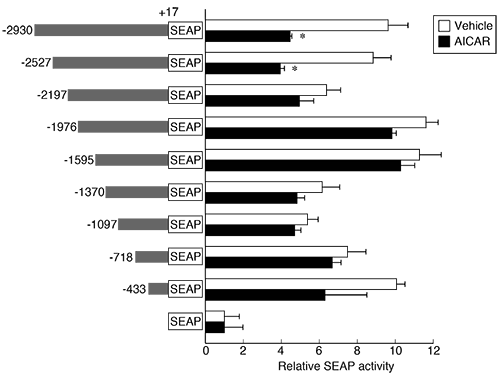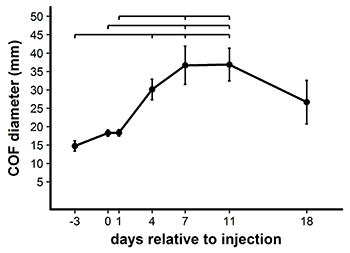- |<
- <
- 1
- >
- >|
-
Article type: Original Article
2020 Volume 66 Issue 2 Pages 97-104
Published: 2020
Released on J-STAGE: April 10, 2020
Advance online publication: December 09, 2019Download PDF (1697K) -
 Article type: Original Article
Article type: Original Article
2020 Volume 66 Issue 2 Pages 105-113
Published: 2020
Released on J-STAGE: April 10, 2020
Advance online publication: December 29, 2019Editor's pickCover Story:
Most primordial follicles present in ovaries are dormant and only a few of them are activated in every estrus cycle. However, the mechanism controlling the activation of dormant primordial follicles in vivo remains unclear. In this study, Komatsu et al. found that almost all the activated primordial follicles (black arrows) made contact with blood vessels (red arrows) in mouse ovaries (Komatsu et al. Increased supply from blood vessels promotes the activation of dormant primordial follicles in mouse ovaries. pp. 105–113). To confirm the hypothesis that angiogenesis is crucial for activation of the dormant primordial follicles in vivo, Komatsu et al. induced angiogenesis using recombinant VEGF. They found that the activation of dormant primordial follicles was promoted by an increase in the number of blood vessels in the ovaries. Furthermore, the number of activated follicles increased in cultured ovarian tissues depending on the serum concentration in the medium. These results confirm that the supply of serum components through new blood vessels formed via angiogenesis is a cue for the activation of dormant primordial follicles in the ovaries.Download PDF (4871K) -
Article type: Original Article
2020 Volume 66 Issue 2 Pages 115-123
Published: 2020
Released on J-STAGE: April 10, 2020
Advance online publication: January 27, 2020Download PDF (1069K) -
Article type: Original Article
2020 Volume 66 Issue 2 Pages 125-133
Published: 2020
Released on J-STAGE: April 10, 2020
Advance online publication: January 19, 2020Download PDF (5324K) -
Article type: Original Article
2020 Volume 66 Issue 2 Pages 135-141
Published: 2020
Released on J-STAGE: April 10, 2020
Advance online publication: December 27, 2019Download PDF (1789K) -
Article type: Original Article
2020 Volume 66 Issue 2 Pages 143-148
Published: 2020
Released on J-STAGE: April 10, 2020
Advance online publication: December 29, 2019Download PDF (790K) -
Article type: Original Article
2020 Volume 66 Issue 2 Pages 149-154
Published: 2020
Released on J-STAGE: April 10, 2020
Advance online publication: January 28, 2020Download PDF (640K) -
Article type: Original Article
2020 Volume 66 Issue 2 Pages 155-161
Published: 2020
Released on J-STAGE: April 10, 2020
Advance online publication: January 24, 2020Download PDF (2735K) -
Article type: Original Article
2020 Volume 66 Issue 2 Pages 163-174
Published: 2020
Released on J-STAGE: April 10, 2020
Advance online publication: January 26, 2020Download PDF (8336K) -
Article type: Original Article
2020 Volume 66 Issue 2 Pages 175-180
Published: 2020
Released on J-STAGE: April 10, 2020
Advance online publication: January 19, 2020Download PDF (751K) -
Article type: Technology Report
2020 Volume 66 Issue 2 Pages 181-188
Published: 2020
Released on J-STAGE: April 10, 2020
Advance online publication: January 27, 2020Download PDF (916K)
-
Article type: Technology Report
2020 Volume 66 Issue 2 Pages 189-192
Published: 2020
Released on J-STAGE: April 10, 2020
Advance online publication: January 16, 2020Download PDF (1174K) -
Article type: Technology Report
2020 Volume 66 Issue 2 Pages 193-197
Published: 2020
Released on J-STAGE: April 10, 2020
Advance online publication: January 26, 2020Download PDF (1610K)
- |<
- <
- 1
- >
- >|












